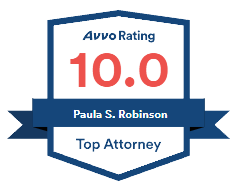July is the Eye Injury Prevention Month in the United States. At Robinson Law, our mission this month is to raise awareness about the eye injury hazards at the workplace and highlight the need for employers and workers to use protective eyewear to prevent accidents.
Incidence of Job-Related Eye Injuries
Eye injuries are among the more common job-related injuries across various industries. According to NIOSH, as many as 2,000 American workers sustain serious workplace eye injuries that require medical treatment every day. Nearly one in three of these injuries require treatment in a hospital ER with at least 100 of these worker eye injuries resulting in one or more missed workdays.
To counter this, safety experts and eye care professionals at the American Association of Ophthalmology (AAO) say that appropriate eye protection can reduce the severity, or prevent up to 90% of these eye injuries. Clearly, employers can engage a more proactive role to protect workers from eye injuries by providing protective eyewear, raising awareness about the eye injury risks, and creating policies and supervision procedures to ensure compliance with safety methods.
Primary Causes of Workplace Eye Injuries
Workers in Pennsylvania and elsewhere suffer from eye injuries on the job for two key reasons:
1. Failure to wear appropriate eye protection
2. Wearing wrong or defective eye protection for the job
Injured workers often report that they were not aware that eye protection was necessary for the type of job they were performing. Employers should provide workers with effective eye and face protection in jobs that involve the risk of eye injury.
Workplace policies and communication should be put in place to ensure that workers are aware of and use protections, such as safety glasses, goggles, helmets, face shields, or full-face respirators depending on the type of job hazard.
Types of Job-Related Eye Hazards
Appropriate eye protection at the workplace is necessary in jobs that involve the following types of potential eye hazards:
- Sharp projectiles, such as pieces of wood, metal, concrete, or dust and other particles
- Radiation, such as lasers, infrared or heat radiation, UV radiation, and visible light
- Chemical exposure, including fumes and splashes
- Pathogens, such as HIV or hepatitis (blood-borne)
Occupations where the risk of eye injury is higher include manufacturing, construction, carpentry, electrical work, welding, plumbing, mining, automobile repair, and maintenance.
What Steps can the Employers Take to Prevent Eye Injuries?
Employers in Pennsylvania can take the following basic steps to minimize the risk of workplace eye injuries:
- Carry out a professional eye hazard assessment of your workplace
- Mitigate or eliminate potential eye hazards as much as possible
- Provide appropriate protective eyewear to the workers
- Inform and educate workers about the importance of using eyewear
- Create workplace policies and supervision procedures requiring workers to use eyewear
- Place warning signs and labels near the places of potential hazard or the machinery and tools to serve as a reminder to use eyewear
- Integrate the use of safety eyewear with machine guards, partitioned workstations, and other types of engineering controls
Below are a few suggested options for top rated protective eyewear:
- Construction – DEWALT DPG82-11C Concealer Clear Anti-Fog Dual Mold Safety Goggle
- Lab Workers – TR Industrial Anti-Fog Approved Wide-Vision Lab Safety Goggle
- Hospitals – Prestige Medical Colored Full Frame Adjustable Eyewear
Consult with a Dedicated Workers’ Compensation Lawyer in PA
Paula Robinson, Esq. is a highly skilled and experienced workers’ comp lawyer in Eastern PA who is committed to fighting for the compensation rights of injured workers. If you or a loved one has sustained an eye injury on the job, reach out to us at Robinson Law today for a free and confidential consultation.









